
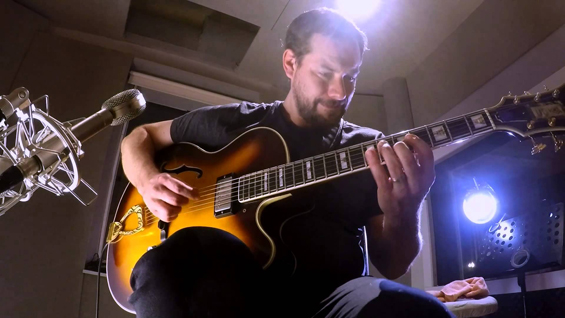
FIVE QUESTIONS WITH ERIC HOFBAUER
Many jazz artists have recorded covers of classical works, but none perhaps as extensively as Eric Hofbauer. Operating under the Prehistoric Jazz banner, the Boston-based guitarist and fellow quintet members Todd Brunel (clarinets), Jerry Sabatini (trumpet), Junko Fujiwara (cello), and Curt Newton (percussion) have produced three acclaimed full-length recordings that boldly re-imagine groundbreaking twentieth-century works by Stravinsky, Messiaen, and Ives: The Rite of Spring, Quintet For the End of Time, and Three Places in New England (on the horizon is the fourth volume, a treatment of Duke Ellington's 1935 work Reminiscing in Tempo). If anyone is equipped to take on such a considerable challenge, it's Hofbauer, a graduate of the New England and Oberlin Conservatories and a teacher of jazz theory and history at both Clark University and Emerson College (he's also been a visiting professor at Wellesley College and the University of Rhode Island). Though the Prehistoric Jazz project has received a deservedly large amount of attention, Hofbauer also issues solo guitar recordings, of which four have been released: American Vanity, American Fear, American Grace, and, recently, Ghost Frets, an eclectic set featuring pieces by Eric Dolphy, George Harrison, and The Psychedelic Furs, among others. In the following interview, Hofbauer discusses in great detail various aspects of the Prehistoric Jazz series, and we thank him for speaking with textura about this fascinating project.
1. I like the description by historian and writer Kevin Whitehead of the Prehistoric Jazz series as being “less about jazzing the classics than situating the last century's classical music and classic jazz in the same modernist continuum.” And though I agree with him that you're doing something considerably more than simply “jazzing the classics,” I wonder if you might describe in your own words what you're doing in a project that strikes me as a truly symbiotic melding of genres.
“Jazzing the Classics,” “Rocking the Jazz,” or whatever the more commercially geared “blending” concept might be, tends to take a one-dimensional perspective, that is, make a classical piece sound like jazz by simply just ‘swinging' the melody and then soloing, etc. What I attempt to do with Prehistoric Jazz is get deeper into the language used in the pieces, the actual music vocabulary (questioning the approach to rhythm, time, harmony, timbre, etc.). From there I'm looking for a common tongue or a shared-music DNA with jazz and improvisation from my post-modern perspective.
What makes The Rite of Spring work as a vehicle for improvisation is not just the catchy rhythmic riff of “Dances of the Young Girls” (although it is effective), but it goes deeper than that into Stravinsky's harmonic language, which overlaps generously with post-bop concepts of chord substitutions (especially the tri-tone sub). Ives's use of poly-rhythm and poly-pulse in “Putnam's Camp,” as just one example, immediately speaks to me with a vocabulary central to Mingus's “Meditations on Integration,” as well as the bigger philosophies of swing carved out of the duality of a three-beat over two-beat poly-pulse.
One thing that has surfaced with this approach is that not all ‘classical' pieces can work. I've received suggestions of pieces to try to turn into the next Prehistoric Jazz arrangement, and I could not do them as there was not an entry point for me of overlapping music vocabulary and structural DNA. Just like the best jazz standards that stand the test of time because they have malleability (by the way, history has proved that not all Tin Pan Alley songs make great jazz tunes for my same reasons), the pieces I pick also have to have a flexibility, a way to create organic space for improvisation to be used as a structural component to the overall narrative of the arrangement, and not just jammed in the middle as some ‘head-solo-head' cliché.
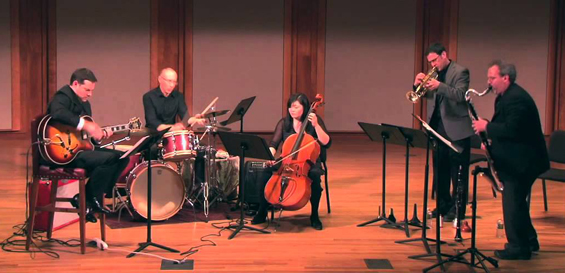
2. How did the idea for the series first come about, and how challenging was it to find the right personnel for the project?
This Prehistoric Jazz idea developed out of my interest in celebrating the centennial of the premiere of The Rite of Spring in some way. It's one of my favourite pieces of music, period. In my conservatory days I used to listen to it in the library daily between dinner and my night practice session. Often I would drift off (college cafeteria food will make one do that on occasion), and the sounds of bassoons and violins would turn into actual voices in my dreams. I feel like since then the piece has somehow become woven into my conscious and unconscious. I saw a video of Bernstein rehearsing an orchestra and asking the percussion to play “like Prehistoric Jazz” and that gave the project its name. The rest of the story is all there in the music … moving through from volumes one to four.
It actually wasn't that challenging to find the personnel; when I had the idea to write an arrangement of the piece for the centennial, I had the idea of what instruments to use and already knew who would thrive in this setting. It takes an open-minded jazz player and maybe even a more open-minded classical player to trust what I need done to execute these pieces. The common ground is improvisation; all the players in the EHQ improvise, all have different strengths and skill sets that cover modern classical and all jazz styles. It's my job to write for each player's strengths, highlighting their individuality as improvisers while maintaining the purpose of the arrangement.
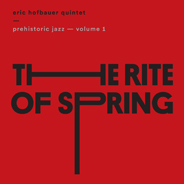
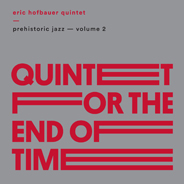
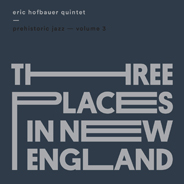
3. Some examples reminiscent of what the quintet's doing come to mind, in jazz Miles and Gil Evans's treatment of Rodgrigo's Concierto de Aranjuez on Sketches of Spain and Wayne Shorter's version of Villa-Lobos's “Bachianas Brasileiras No. 5” on Alegria; many prog-rock outfits also have attempted covers of classical works, Emerson, Lake & Palmer's album-length version of Mussorgsky's Pictures at an Exhibition one of the better known. Am I correct in thinking, however, that there's no other current group doing what you're doing in the series, certainly not to the same degree as you are in dedicating entire albums to a single work and establishing an entire group to perform the material?
The Bad Plus, of course, did The Rite of Spring in 2013, made an album and toured it. But it was different from my quintet's approach. Other groups too have done a bit of Messiaen or a short piece of Ives, but I think you may be correct that at least now in 2017 there's not another group dedicated to this type of interpretation of this repertoire. We now have four pieces in our repertoire, as the quintet just recorded Duke Ellington's Reminiscing in Tempo, a through-composed piece from 1935, very rarely performed and under-appreciated, as volume four. That's almost four hours of Prehistoric Jazz music, and I do think this is unique in the current landscape of jazz and classical chamber groups.
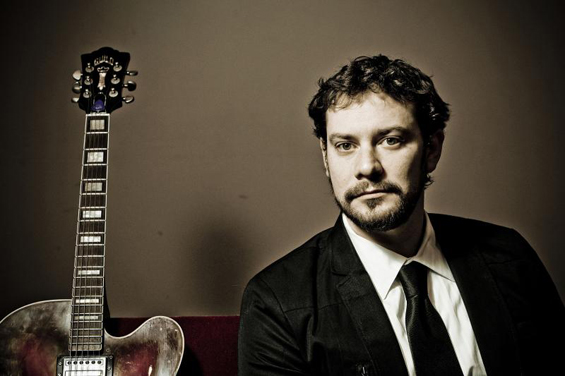
4. Each of the three currently available released works no doubt presented challenges of different kinds to you as the arranger. Was it easier to create the Stravinsky arrangement when it was an orchestral score you were working from as opposed to, say, the Messiaen piece where you might have had to consciously work against replicating the parts for clarinet and cello that are already in the original score?
Yes, to get back to what I was talking about before, I used various music DNA elements to open up these pieces to both the quintet instrumentation and how to synthesize improvisation into the arrangements. Each volume offered various points of entry: The Rite has a strong syncopated rhythm palette and harmonic language; End of Time has harmony again plus melodic elements like intervallic motivic, almost riff-like ideas, and nuanced timbral elements; Three Places has everything, syncopation, advanced harmony, motivic ideas, timbre, plus added blues and folk elements (pentatonic scales, etc.) and that whole poly pulse/ poly-rhythm layering.
Once the common ground was established, I could puzzle my way through other considerations and conundrums. For Stravinsky, it was orchestration; there is so much going on in the score, and I had to boil each orchestra section down to one instrument (bass to one trumpet, winds to one clarinet etc.); the guitar became the floater voice and a thickening agent. In the Messiaen, three out of five were ready to go, the guitar took on the piano part, and the drums became the ‘floater' and helped to create textures and time. With the Ives, all bets were off; the piece was so grand and so small sometimes almost simultaneously that the score was not much of a helpful guide. Listening and imagination made that orchestral deconstruction and re-imagining possible. For the new volume, Duke Ellington's Reminiscing in Tempo, there is no score, so the process was multi-step: transcribe the original 1935 big band arrangement first, then arrange for the quintet. That one was the hardest yet.
To your point about the Messiaen, I did not work against the score per se with the cello and clarinet, for example, because part of the common tongue with jazz is the strong intervallic melodies. I actually used the original melodies as the dominant structures of the arrangement, and from there, liberal experiments were encouraged in the parts in terms of phrasing, timbre, articulation and ad-libbing variations to the melodies.
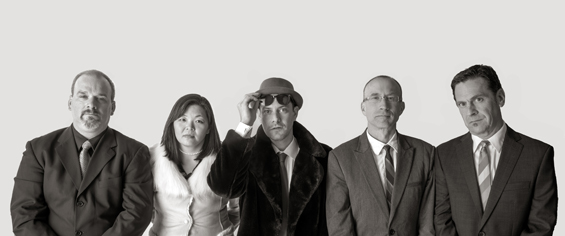
5. Your site includes concert-related details about the upcoming fourth volume recording, Reminiscing in Tempo. What prompted you to select it as the next chapter, and have you determined yet what will follow it?
It fit the maxim for the project: a through-composed early- to mid-twentieth century piece with a very specific narrative. Duke wrote it after the passing of his mother, and although it was critically panned (because they expected ‘swinging solos' and there were none), which led Duke to never perform it again, it stands as an eloquent example of American modernism. He uses advanced harmony usually associated with post-bop in the jazz world (chromatic chord progressions, tri-tone subs, altered extensions), and maintains a rigorous adherence to motivic theme and variation, which is central to the composition's narrative. I believe that “memory as catalyst for change” is the primary theme of Reminiscing in Tempo, or at least that's how I hear it and build my arrangement around. That fits well with Ives's Three Places; again the memory of place and time used to effect change in the present is what I hear in the work and what I amplify in my arrangement.
For now, I think we will sit on these four volumes for a bit. The fourth volume will be out in 2017, and I have a lot of hustling to do to book gigs and build interest in these projects. We have had some wonderful audiences at American college campuses, and in 2016 we played the historic BOZAR theatre in Brussels to an enthusiastic full house, so I know there are more fans and audiences out there for this music; I just need time and a chance to prove it. My goal for the next year is to book more tours, hopefully some festivals, maybe find an agent and/or management to help get the music to an audience I know is out there both domestically and specifically abroad. Although no new arrangement or repertoire idea has popped into my mind's ear yet for the quintet, I'm sure something will in the next year.
February 2017![]()